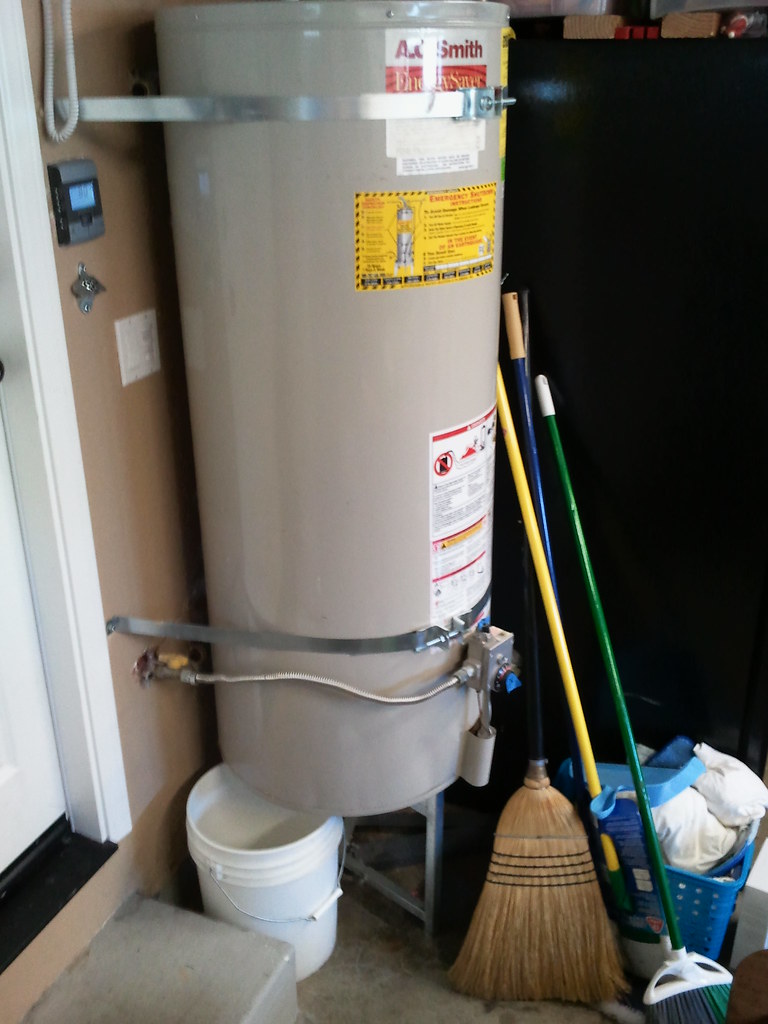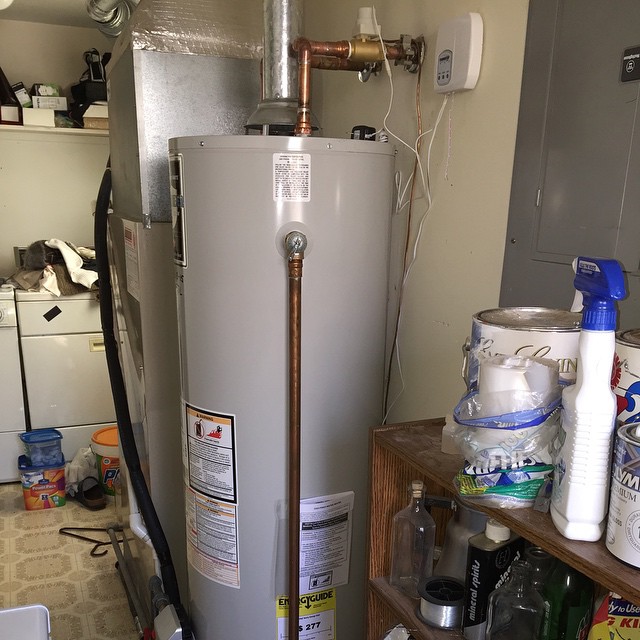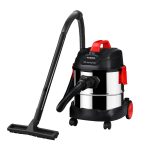Last Updated on May 21, 2024 by Asfa Rasheed

A puddle of water around your water heater is one of the worst things you can find. Cleaning up this mess can be a pain, and you can get a sinking feeling when you consider how much you’ll have to spend fixing it.
Whenever a puddle appears on the floor around a water heater, it’s essential to find out what the issue might be to avoid future problems. This guide will discuss the different aspects of a leaky water heater.
What are the reasons behind the leaky water heater?
It is possible for a water heater to leak for a variety of reasons. Look for the pooling of water to determine where the leak is coming from.
Leaking from the TOP of your water heater indicates that the inlet or outlet valves and their fittings (also known as nipples) may be loose or rusted. Tightening these may solve the problem, but they need to be replaced if leaks persist.
It is recommended to inspect the temperature and pressure relief valve, which is usually located at the top. There may be too much pressure in the tank, or the valve may need to be replaced if there is water from that valve.
If your water heater was leaking from the bottom, ensure the drain valve was closed entirely and that it wasn’t wet. A leak is most likely caused by your internal tank, which needs to be replaced if this tests out.
What are the steps to repair the leaky water heater?
1. If the water heater leaks, turn it off.
An on/off switch or a dial will be found near the gas line connection on a gas water heater. A home’s electric service panel may contain a breaker labeled “Hot Water Heater” that can be switched off to shut off the electric water heater.
2. Turn off the tank’s water pressure.
Two plumbing pipes surround a water heater’s top. Hot water is supplied to your faucets through the hot water pipe, and cold water is provided through the cold water pipe. A shutoff valve will only be found on the hard line; turn that valve off to stop hard water from entering the tank.
3. Make sure loose pipe fittings are tightened.
The leak may be stopped by tightening the loose fitting with a wrench if the water comes from both the cold and hot water pipes. Water heaters and hot and cold water lines in your home can be connected by flex pipes, like these 12-Inch Fluid master Braided Stainless Steel Connectors.
4. If the leak originates from the TPR valve, adjust the water temperature.
In addition to the water’s temperature, the pressure of the water coming into the tank from the cold water supply line is also important. A TPR valve, sometimes known as a pop-off valve, opens to release tension in a tank when it reaches an unsafe level. A valve located at the down-turned pipe you found earlier directs the scalding spray of water toward the ground instead of the faces of those nearby.
5. Cold water pressure should be checked.
When the water temperature is not too high, the water pressure in the cold water supply line may be too high. Your water heater may be experiencing excessive pressure if the flowing water pressure is greater than 100 pounds per square inch (psi). Water can also leak from the TPR valve as a result of this.
6. Replace a leaking drain valve
If drips emanate from the drain valve, you should replace them immediately. There are people who choose to call a plumber at this point, and there are others who may be able to do it on their own. A garden hose must be attached to the water heater’s drain valve and run to a floor drain or shower drain to drain the water heater.
Is a leaky water heater dangerous?
In the case of a leaking water heater, water is likely dripping in the area and creating a potentially hazardous situation. Homeowners need to be aware of water leaks around or inside their water heaters so that they can take action to fix them before they cause any damage to their homes.
Read more:An Extensive Guide About HVAC Inspection With Its Importance And Cost
There are signs of leaks around a water heater if pools or puddles of water are visible outside the tank. The water heater may still leak if there is soggy drywall or spots on the ceilings, even if no water has spilled.
In spite of not being able to see the leak, water heaters may still be damaged by water. Water dripping or leaking from the pressure relief valve in the water heater’s tank may indicate an internal leak – a device used to prevent the heater from being damaged by excessive water pressure.
If left unfixed for an extended period, a leaking water heater can cause severe water damage, even flooding a basement. Although water may leak from the surface of the water heater, it is not safe – water pooling nearby can cause a hazard to wildlife as well as lead to the growth of mold.
As a result of water damage to other parts of the house or building, water heater problems tend to become more serious. Leaking water from the water heater can damage your home’s surfaces, walls, and exteriors.
What you can do to prevent a leaky water heater?
It is still possible to prevent water heater leaks even if you cannot see where they are coming from. There are some things you can do to prolong the life of your water heater, such as improving the water quality and reducing the amount of use it receives. Water heaters generally last 8-12 years; however, some things you can do can prolong their life.
· Check it out!
A leaky water heater won’t be apparent unless you go down to the basement, step into the garage, or look in the utility closet. It is only necessary to perform simple eye tests at all of the connections and under the tank itself to determine whether there are any problems. You do not know if you do not see it yourself.
· Maintenance on a regular basis
Plumbing professionals ensure that water heaters don’t leak by scheduling regular maintenance. To ensure they function correctly, plumbers conduct maintenance checks on all plumbing components, including water heaters. Checking for active leaks and carefully inspecting each element for the possibility of future leaks is part of their inspection process.
· Keep pipes insulated
Water heaters should have insulated water supply and drain lines, such as pipe insulation or electrical tape. Home improvement stores sell these, and you can follow the instructions on the box to install them. As a result, heat will be insulated, energy will be saved, and future leaks from water heaters will also be prevented.
FAQs (Frequently Asked Questions)
Why does the water heater leak from the bottom?
If you see water leaking from your water heater’s bottom, check the drain valve for complete closure. It may need to be tightened if it is still leaking. If you can draw the drain valve slightly, try using a pipe wrench. It is essential not to over-pull the valve, as it would leak more.
If a water heater leaks, can it be fixed?
A water heater should be replaced as soon as the tank leaks water and you are sure there is no other reason for the leak. Mineral deposits in the tank and constant heating and cooling eventually cause the inside of the tank to corrode. In the case of a leaking tank, there is no way to repair it.
Apart from this, if you want to knw about Water Heater And How To Repair it then please visit our Home improvement category


























